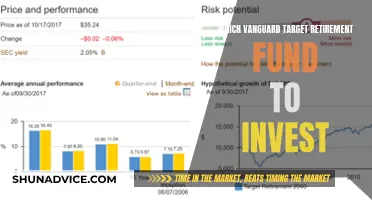
International investing is an attractive option for investors looking to spread their investment risk and gain exposure to the growth of other economies. There are several ways to invest in foreign companies, including American Depository Receipts (ADRs), Global Depository Receipts (GDRs), direct investing, mutual funds, exchange-traded funds (ETFs), and multinational corporations (MNCs). Mutual funds and ETFs are popular options as they provide straightforward access to international markets and are more affordable than dealing with ADRs or currency conversions. However, it's important to note that international investing carries additional risks, such as access to different information, higher costs, currency exchange rate fluctuations, and political, economic, and social events that can impact market value.
| Characteristics | Values |
|---|---|
| Reasons for investing in foreign companies | Diversification, growth, and reduced risk |
| Types of funds | International mutual funds, exchange-traded funds (ETFs), American Depositary Receipts (ADRs), Global Depository Receipts (GDRs), and multinational corporations (MNCs) |
| Risks | Different information access, higher costs, currency exchange rate changes, market value changes, political and economic events, liquidity levels, legal remedies, and market operation differences |
| Benefits | Geographic diversification, portfolio diversification, and meeting financial goals |
| Factors to consider before investing | Knowledge of international markets, investment objectives, country selection, and risk tolerance |
What You'll Learn

Mutual funds
There are a few different types of mutual funds that invest in foreign companies:
- Global funds: These funds invest primarily in foreign companies but may also invest in companies from the fund's domestic country.
- International funds: These funds generally limit their investments to companies outside of the fund's domestic country.
- Regional or country funds: These funds invest principally in companies located in a particular geographical region, such as Asia or Europe, or in a single country.
- International index funds: These funds seek to track the results of a particular foreign market or international market index.
Some advantages of investing in international mutual funds include:
- Diversification: International mutual funds can help investors spread their investment risk among foreign companies and markets in addition to domestic companies and markets.
- Growth: International investing can take advantage of the potential for growth in some foreign economies, particularly in emerging markets.
- Reduced risk: Markets outside the US don't always rise and fall at the same time as the domestic market, so owning pieces of both international and domestic securities can level out some of the volatility in an investment portfolio.
Some things to consider before investing in international mutual funds include:
- Access to information: Many companies outside the US do not provide investors with the same type of information as US public companies, and the information may not be available in English.
- Costs: International investing can be more expensive than investing in US companies due to unexpected taxes, higher transaction costs, and currency conversion costs.
- Currency exchange rates: Changes in currency exchange rates can increase or reduce investment returns. Some countries may also impose foreign currency controls that restrict or delay investors from moving currency out of the country.
- Motilal Oswal Nasdaq 100 FOF
- ICICI Prudential US Bluechip Equity Fund
- Franklin India Feeder Franklin US Opportunities Fund
- Aditya Birla Sun Life Global Emerging Opportunities Fund
- PGIM India Global Equity Opportunities Fund
Mutual Fund Investment: Smart Money Moves to Make Now
You may want to see also

Exchange-Traded Funds (ETFs)
ETFs can be structured to track anything from the price of a commodity to a large and diverse collection of securities. They can even be designed to track specific investment strategies. There are several types of ETFs, including:
- Passive ETFs: These aim to replicate the performance of a broader index, such as the S&P 500.
- Actively managed ETFs: These do not target an index of securities but rather have portfolio managers making decisions about which securities to include.
- Bond ETFs: These provide regular income to investors, depending on the performance of underlying bonds.
- Stock ETFs: These are a basket of stocks that track a single industry or sector, providing diversified exposure to a single industry.
- Industry or sector ETFs: These focus on a specific sector or industry, such as the energy sector.
- Commodity ETFs: These invest in commodities like crude oil or gold and can diversify a portfolio.
- Currency ETFs: These track the performance of currency pairs consisting of domestic and foreign currencies and can be used to speculate on currency prices.
- Bitcoin ETFs: These expose investors to bitcoin's price moves by purchasing and holding bitcoins as the underlying asset.
- Ethereum ETFs: These provide a way to invest in ether, the currency native to the Ethereum blockchain, without directly owning the cryptocurrency.
- Inverse ETFs: These earn gains from stock declines by shorting stocks using derivatives.
- Leveraged ETFs: These seek to return multiples on the return of the underlying investments by using debt and derivatives.
ETFs can be a good investment option for those looking to access a diverse mix of asset classes, including domestic and international stocks, bonds, and commodities. They typically have lower operating expense ratios (OERs) than actively managed mutual funds, making them a more affordable option.
Banks' CD Fund Investment Strategies: Where Does Your Money Go?
You may want to see also

American Depository Receipts (ADRs)
ADRs offer U.S. investors a way to purchase stock in overseas companies that would not otherwise be available. Foreign companies also benefit from ADRs as they enable them to attract American investors and capital without the hassle and expense of listing on U.S. stock exchanges.
ADRs are issued by an American bank or broker and represent one or more shares of foreign-company stock held by that bank in the home stock market of the foreign company. The ratio of foreign shares to one ADR will vary from company to company, but each ADR for any one company will represent the same number of shares.
ADRs may be listed on a major exchange such as the New York Stock Exchange or may be traded over the counter (OTC). Those that are listed can be traded, settled, and held as if they were ordinary shares of U.S.-based companies.
ADRs are also known as U.S. depositary receipts. Securities of a foreign company that are represented by an ADR are called American Depository Shares (ADSs).
There are two basic categories of ADRs: sponsored and unsponsored. A sponsored ADR is issued on behalf of the foreign company, with the bank and the business entering into a legal arrangement. The foreign company usually pays the costs of issuing an ADR and retains control, while the bank handles the transactions with investors. A sponsored ADR is categorised by the degree to which the foreign company complies with Securities and Exchange Commission (SEC) regulations and American accounting procedures.
An unsponsored ADR is issued without the involvement, participation, or even permission of the foreign company. In theory, several unsponsored ADRs for the same foreign company could be issued by different U.S. banks. These different offerings may also offer varying dividends. With sponsored programs, only one ADR is issued by the bank working with the foreign company.
ADRs are also categorised into three levels, depending on the extent to which the foreign company has accessed the U.S. markets. Level I ADRs are found only on the over-the-counter market and have the loosest requirements from the SEC. While they are riskier for investors than other types of ADRs, they are an easy and inexpensive way for a foreign company to gauge the level of U.S. investor interest in its securities. Level II ADRs can be used to establish a trading presence on a stock exchange but cannot be used to raise capital. Level III ADRs are the most prestigious and can be used to establish a substantial trading presence in the U.S. financial markets and raise capital for the foreign issuer.
Best IRA Companies for Mutual Fund Investors
You may want to see also

Global Depository Receipts (GDRs)
GDRs are created when a depository bank purchases shares of foreign companies and then issues a certificate backed by those shares, which can be traded on a local exchange. Typically, one GDR is equal to ten underlying shares, but any ratio can be used. GDRs are unsecured and do not carry any voting rights. They are denominated in a freely convertible currency and are often listed on the Frankfurt, Luxembourg, and London Stock Exchanges.
GDRs have several advantages, including providing liquidity, access to foreign capital, and the potential for forex gains. They are easily transferable and help companies raise capital from foreign markets. However, there are also disadvantages, such as high regulation, forex risk, and a lack of voting rights.
Overall, GDRs have emerged as one of the essential mechanisms for companies to raise capital from foreign markets and for foreign investors to invest in domestic companies.
Hedge Fund Investment Strategies: Where and How They Invest
You may want to see also

Multinational Corporations (MNCs)
The rise of MNCs can be traced back to the 1600s and colonialism, with the East India Company, Dutch East India Company, and Hudson's Bay Company being some of the earliest examples. These companies engaged in international trade and exploration and set up colonial "factories" or port cities.
Today, MNCs continue to shape the global economy and influence trade policies through lobbying efforts and economic diplomacy. They benefit from economies of scale, access to diverse markets, and the ability to take advantage of lower tax rates in countries seeking foreign investment. Some well-known examples of MNCs include Apple, Toyota, Nestle, Exxon Mobil, and Coca-Cola.
However, MNCs have also been criticized for their disreputable tax, environmental, and labor practices. They have been accused of tax avoidance, environmental devastation, labor exploitation, and crowding out local businesses.
Investing in MNCs can provide individuals with international exposure and potential growth opportunities, especially in emerging markets. However, it is important to consider the risks associated with international investing, such as access to different information, higher costs, changes in currency exchange rates, and political, economic, and social events in the host countries.
Global Investment: Largest Funding Sources in Banking
You may want to see also
Frequently asked questions
Investing in foreign companies allows investors to diversify their portfolio and reduce risk by spreading investments across different markets and economies. It also gives investors exposure to the growth of other economies, particularly emerging markets.
International investing has higher costs and taxes associated with it. It is also more difficult to access information about foreign companies, and there may be language barriers. There is also a higher risk of volatility, particularly in emerging markets, and foreign markets may be less regulated, increasing the risk of fraud. Finally, there is a currency risk due to changes in exchange rates.
There are several ways to invest in foreign companies, including:
- American Depository Receipts (ADRs)
- Global Depository Receipts (GDRs)
- Foreign Direct Investing
- Global Mutual Funds
- Exchange-Traded Funds (ETFs)
- Multinational Corporations (MNCs)







